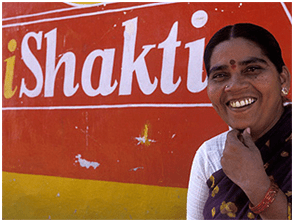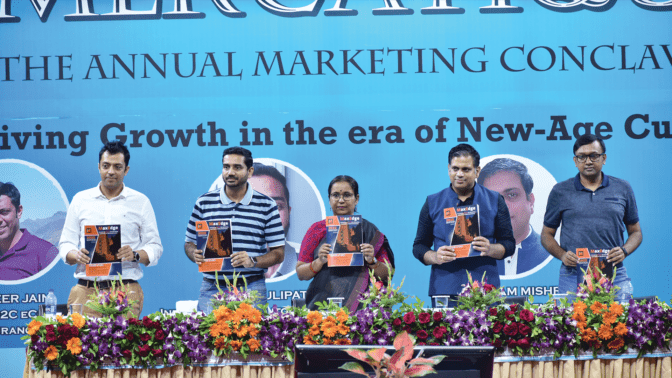The bottom of the pyramid (BoP) refers to the four billion poor people in the world. They have no access to global markets and thus, have to pay more for goods and services. Big companies don’t see them as viable markets. In fact, this group represents the biggest market opportunity in the world if companies can offer affordable products and services more efficiently. The pyramid of global wealth shows that tier 1 has 85% of total world’s wealth held by 20% of the world’s population who typically earn more than $20,000 per year. Tier 2 and Tier 3 represent the 1.5 billion people with incomes between $1500 and $20,000 and the four billion people at the bottom survive at less than $1500 a year.

Source: U.N. World Development Report
Most of today’s global companies focus on tier 1. The fortune at the BoP reverses the pyramid to get the companies to meet the needs of world’s poorest. This means not seeing the poor as victims of poverty but as value driven consumers who work in difficult circumstances. The focus is on creating a inclusive capitalism which involves creating symbiotic relationships based on trust and respect. Until the poor have an access to global economy, they have no chance for sustainable development.
According to the prevailing logic, there is no opportunity for generating revenues in developing countries but in reality, there is. Companies that benefit are the ones that are able to shift to lower cost production models with smaller margins. India has a population of about 1 billion and a GDP per capita of about $1000. The market opportunity is $1.2 Trillion but if we take into account the purchasing power parity, it comes out that a dollar can buy up to four times in India as compared to US, the market opportunity comes out to be $4trillion. The same is true on a smaller scale in Nigeria and South Africa. By virtue of market size alone, this is a huge opportunity.
To access opportunities at the BoP, companies have to combine low costs, quality, profitability and sustainability. This should be assisted by a re-think in the strategy to market the products. Unilever has successfully done this and achieved $6billion annually from these markets and in the process, helped people to gain access to affordable world class products.
To specifically target the rural and Bottom of pyramid market,Godrej came up with a mini-refrigerator i.e. Godrej Chotukool. It was a small, low priced refrigerator. To sell it, Godrej partnered with NGOS’s working with rural women to sell the product. It enabled the women to earn money through commission on sales. In a similar fashion, HUL came up with PureIt , Tata Chemicals launched Tata Swacch and Eureka Forbes came up with AquaSure. These water purifiers are available at low prices and do not require electricity. They were launched keeping rural markets in consideration because of the lack of regular power supply in villages in India.
Companies target rural consumers in harvest season as their purchasing power is high at that time. HUL’s Shakti Ammas (about 40000 in number) got a basic smartphone to bill orders, manage inventory and get updates on promotional schemes.

Source : HUL (hul.co.in)
Dabur India , on the other hand is getting rural people to try its products and experience the benefits. The idea is to get word of mouth advertising. It also organized health camps to advertise toothpaste and chyawanprash portfolio.
Beverage makers like Coca Cola and Pepsi came out with 200ml bottles to cater to the lower income segment i.e., the BoP. The 200ml units were priced as low as Rs.5 to specifically target this segment.
The introduction of sachet is not an innovation by FMCG’s. Its genesis can be linked to paan-masala makers.Earlier it was sold in cylindrical containers which was not so user friendly. So here, convenience was the deciding factor rather than size or price. FMCG companies used this mechanism to target the price sensitive customers and thus sachets became popular on the affordability mantra.
The poor lack capital and do not have access to traditional routes like banks because of the lack of collateral. This leads them to resort to borrowing at exorbitant interest rates from local moneylenders making it almost impossible to generate opportunities that create wealth. If lending organizations are able to consider local customs and networks, they can provide cost effective opportunities for the poor to generate sustainable incomes.
Grameen Bank started as a small community lending organization but now provides loans to more than 25 million people around the world and with a 95% repayment success rate. Central to their success was the ability to focus on local solutions and networks.
Bharti Airtel with potential investor Kotak Mahindra Bank is applying for a payment bank license in a bid to tap huge revenue opportunities from RBI’s financial inclusion initiative. Payment banks are meant to serve the rural areas of the country offering critical services such as money transfers, deposit collection and loans. While telecom companies have the network infrastructure, banks have the knowhow, making it an ideal combination.
There are local companies which are building distribution networks to gain access to rural markets. For example in Africa, it was the global telecommunication companies that provided network services to large coastal cities but it were the existing local companies that helped to build the distribution networks to reach the people in rural and remote areas. This provides income to the local companies as well as provides services to the poor rural community.
To generate wealth from the BoP, the companies cannot rely on the same products and business models that they use for developed markets. They need products which are specifically designed for the poor with profits based on high volumes and not high margins. This means the new business and production models have to be scalable and easily localized. For example, Unilever realized that the poor don’t buy in bulk from the supermarkets so they created single use packets for local markets. Because the consumers are buying in small quantities, the products should be of high quality in order to succeed in the market. Unilever realized that it needed a high quality and low cost product distributed in the local market to achieve success in developing countries. To develop and organize markets, companies have to work in partnership. Empowering the poor through access to buying power, better choice and opportunities can threaten existing local power structures and opposition can build quickly. Companies that develop local base and support stand a much better chance of long term success. Creating a coordination of Non-Government Organizations, community leaders and local leaders is important. These partnerships can leverage local knowledge and insights to help develop sustainable businesses.
Working with local partners is important because you have to integrate local practices into the business. Understanding existing practices can also lead to the development of innovative products and services. The big companies need to lead these partnerships. Building new markets requires huge expenditure. Companies can use their experience for capacity expansion and transfer knowledge. They can freely transfer any new innovations to the tier 1 markets.
Thus, companies need to focus on this segment where the potential for growth is huge. To succeed in marketing at the BoP, they need to come up with inclusive marketing strategies. They also need to realize the difference between the rural and the urban customer and cater to these markets by taking into consideration their tastes, buying patterns and behavior.
Read about: Developing new pyramids in the base of the pyramid
Read about: The curious case of Ghari Detergent
Tags: bottom of pyramid brands market shareYou might like reading:

XIM hosts Annual Marketing Conclave: MERCATIQUE 2022
XIM Bhubaneswar conducted the Annual Marketing Conclave: MERCATIQUE 2022, hosted by MAXIM – The Marketing Committee of XIM. This year the theme was “Driving Growth in the era of New Age Customers.” The event was hosted on 11 September 2022 and was graced by the presence of Mr. Sriram Gopalaswamy, Sr VP, Ecommerce, Welspun Group; Mr. Sameer Jain, VP & […]































